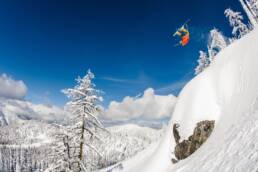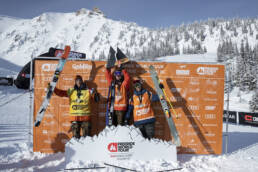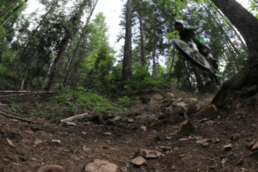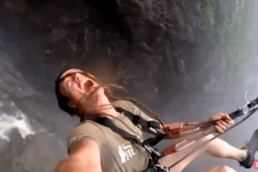Death-defying venues. Physical and financial toll. Stacked odds and international big-mountain skiing’s uncertain future. Over a million viewers tune in to watch life on the Freeride World Tour. Just ask Trace Cooke about it, a Kootenay kid who ripped up the FWT ranks – twice – and then checked out. By Devon O’Neil.
Trace Cooke was in a pickle—again. Going into the penultimate competition on the Freeride World Tour (FWT) last March, a high-stakes run that would determine the next step in his professional skiing career, Cooke knew the odds were long. To advance to the FWT finals in Verbier, Switzerland, Cooke needed a top-10 finish and for other competitors who were ranked ahead of him to crash. Anything less, and Cooke would be cut from the tour and sent home to Nelson, British Columbia, just as he had been two years prior, at the same event.
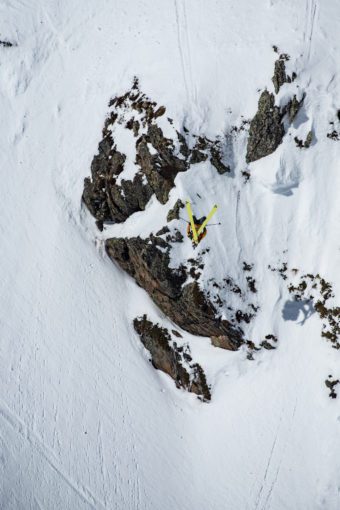
Conditions on the north face of the Wildseeloder, a precipitous 2,119-metre (6,952-foot) mountain above Fieberbrunn, Austria, left much to be desired. Still, all winter long, Cooke had made a point to ski as hard and fast as he could, and he stuck to that strategy once more with the season on the line.
It was not meant to be. Halfway through his run, he crashed.
Cooke skied to the bottom with a storm of emotions coursing through him: disappointment, pride, relief. As he stood below the face, awaiting his irrelevant score, he pondered all it had taken to reach that moment—a small-town Kootenay kid who’d scratched and clawed to reach the world tour, then got kicked off, then made it back again, as he promised he would. Despite the crash and uncertain future it heralded, Cooke felt at peace. “I was pretty satisfied to say I was over it at the bottom of that run,” he says.
His resignation was at once understandable and astonishing. Cooke has been called the best freeskier ever to come out of Nelson, a rare mix of new-school talent and old-school roots. But you could argue the sport has morphed into a starkly different version of the one he fell in love with, ripping around Whitewater Ski Resort and throwing backflips in powder with his friends. Cooke went on to win pro competitions in four countries, including Switzerland and France, and in two years on the world tour, he showed he could place among the top 10. Still, in a sport defined by youth, he’d been chewed up and spit out before his 23rd birthday.
He stood in Austria, 8,200 kilometres (5,095 miles) from home, and bade it a quiet farewell. Not freeskiing. Just the measure of who is the best at it.
THE SPORT OF FREERIDE has gone through many iterations since the late Shane McConkey founded the International Freeskiers Association (IFSA) in 1996. Eventually, the movement grew to include competitions around the world, from Alaska to Andorra, and serve as a proving ground for skiers who aspired to film with the likes of Teton Gravity Research and Warren Miller. Some worried that assigning numbers to a pursuit as pure as freeriding would ruin it, but the sport appealed for many reasons, namely the community it fostered and unparalleled glory it offered—especially on the world tour.
Recently, however, competitive freeriding has reached a crossroads. The lower levels are booming: junior events sell out in less than an hour, resorts clamour to host them, and thousands of teenagers across the proverbial snow globe pay big bucks to chase a similar dream: qualifying for the FWT. This has come with its pitfalls, including purists bemoaning the ladder-like, hockey-style progression up the ranks and the infiltration of so-called helicopter parents, like those who shout at youth-soccer referees.
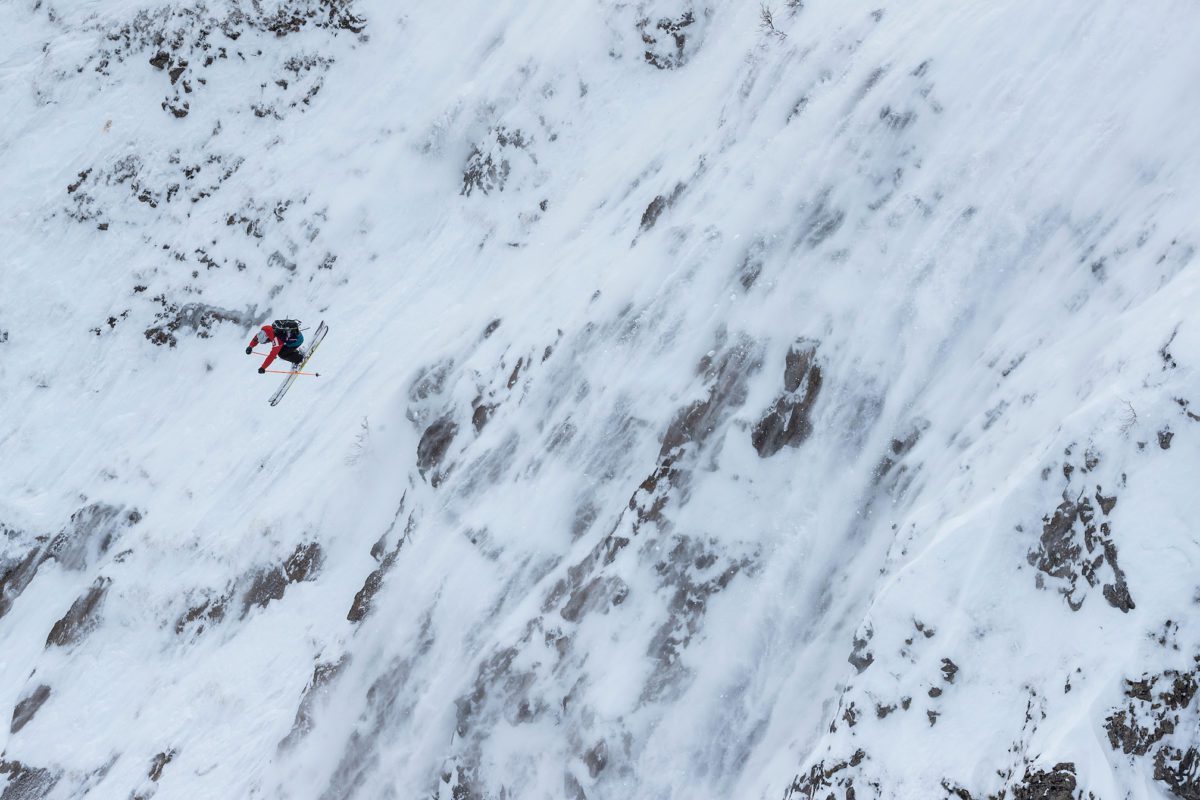
If anyone should have been destined for FWT glory, it was Cooke. He basically grew up on skis under the tutelage of his father, an ex-racer with a ski bum’s devotion to powder. A family rule allowed Cooke to skip school any time it snowed 30 centimetres or more. He dropped his first cliff at age six. “I was pretty keen to get after it,” he says. “My body was made of rubber, and I just bounced off everything.”
Cooke ran with a pod of waist-high Whitewater rippers, aspiring to be like the late Travis Steeger: a freeskier who embodied both the word and ideal. Despite apprehensions about formalizing his passion, he joined the Whitewater Freeride Team at age 14 when he heard members got to skip the lineups on powder days. He had shoulder-length hair and a natural athleticism that portended great things on snow.
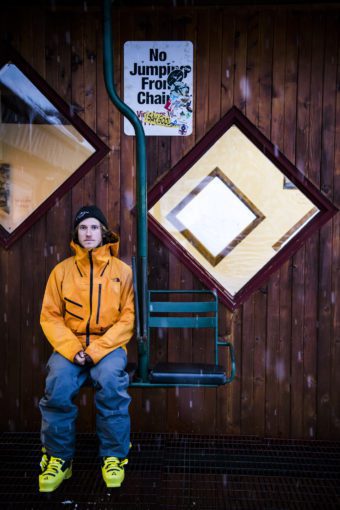
Cooke, however, was also a hockey star, which proved problematic as he got older. By 15, he was the starting right defenceman on the Kootenay Avalanche squad, a status that hinted at his broader potential—and demanded a significant time commitment, particularly for a ski bum. So began a tug-of-war between his country’s national pastime and his heart.
By then, Cooke had already tasted the fruit of freeride competition. He crashed in his first event, at Rossland, British Columbia’s Red Mountain Resort in 2009, then went back and finished second the following year. In 2011, he and his Avalanche teammates were preparing for a critical playoff game when Cooke skipped practice to ski. Two days later, he showed up for the game but was benched. So he quit. “The competitive level and the vibe of hockey just didn’t suit me,” he says. “I wasn’t as happy playing hockey as I was on my skis. That was the deciding factor.”
Cooke followed the IFSA tour (which had expanded to include snowboarders) when he was 16, entering competitions all over North America. He won the overall title in the 15–18 division, no small feat for a kid two years younger than many of his competitors. “At that point, I was trying to find the highest level of big-mountain freeride that I could go to,” Cooke says. “All I could see was the Freeride World Tour. It’s like the NHL in hockey.”
In 2014, unsure whether to pursue a nursing career or keep skiing, Cooke’s mother showed him photos from a trip she’d made to Chamonix, France, and Verbier when she was 20. “If you want to keep skiing,” she said, “this is the pinnacle. They’re the biggest mountains you’ll ever see.” Cooke flew to Switzerland for Verbier Freeride Week, a soft entry into the more demanding Freeride World Qualifier (FWQ) events—and his first step toward making the big show. Nervous and far from home, Cooke won a two-star event (FWQ contests are rated from two-star to four-star, with more points available at higher-rated events) on the shoulder of Verbier’s famed Bec des Rosses, the gnarliest venue in the sport. Soon after, he skied through a knee injury to win again in Chamonix, beating hometown favourite and future world champion Leo Slemett. “To this day I think it is still the best run I’ve ever put down in a competition,” Cooke says. “Afterward, Leo came up to me and said, ‘You need to pursue this.’”

BACK IN THE EARLY DAYS of freeride competition, it more closely resembled a stunt show than the calculated spectacle it is now. “People thought we were a bunch of crazy assholes, and they were not far off,” says longtime Whitewater Freeride Team coach Dano Slater, 43, one of the sport’s early daredevils. “It was quite common to see 100-footers go down in contests, in tracked-out snow.” Athletes didn’t intend to land smoothly; hip-checks and back-slaps were part of their strategy. And judges rewarded them for risking their lives, no matter how ugly the landing.
That began to change in Western Canada when former IFSA world champion Jeff Holden began organizing events in 2000. Holden had made his name as a hucker, once setting a world record by jumping a 45-metre (150-foot) cliff. But he realized the game had to change if it wanted to survive. As both technical director and head judge, Holden spearheaded a radical shift in judging criteria, rewarding those who stuck their landings and penalizing those who didn’t. “Any body part down, we would basically eliminate you in control and technique,” says Holden, 42, who lives near Fernie, British Columbia, and chairs the IFSA’s judge advisory board. “You had to control yourself.”
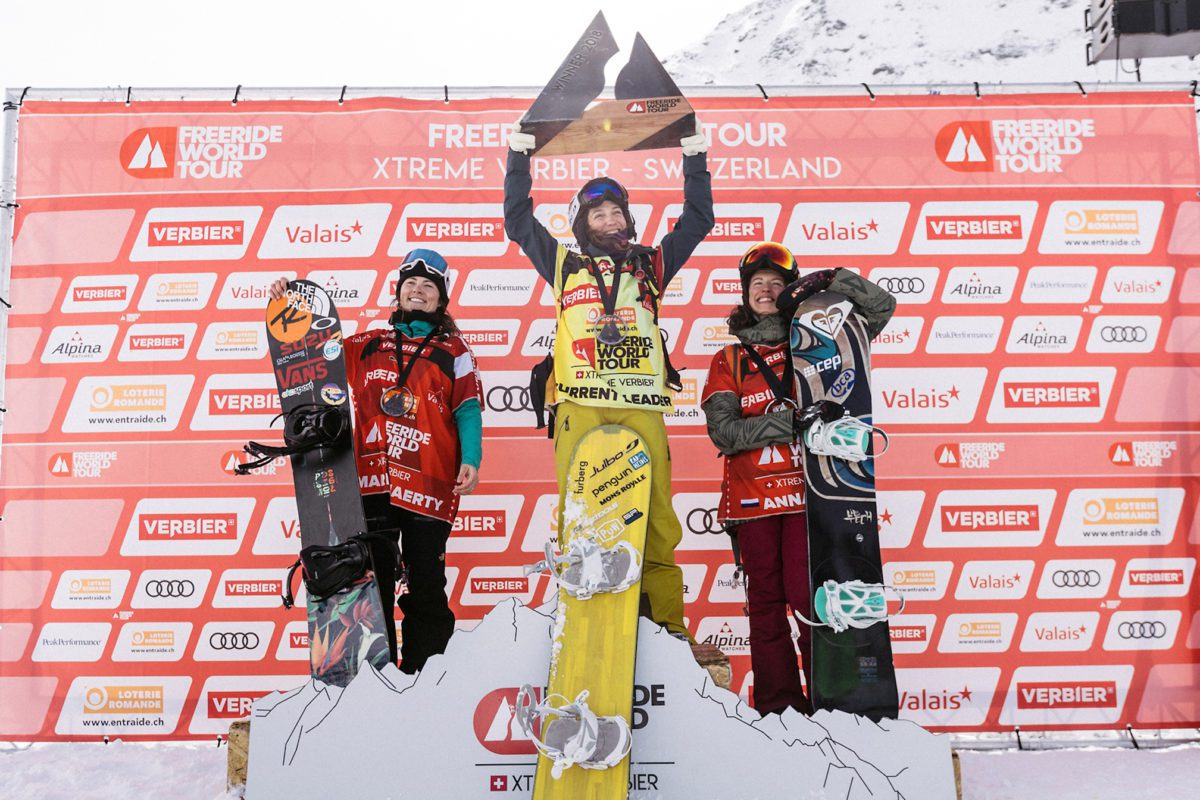
By the time Cooke started chasing points on the FWQ series, the game had changed in other ways, too. Competitions, especially in Europe, featured as many as 10 skiers for every snowboarder, and due to their geographic range, it cost tens of thousands of dollars to follow the circuit for a full season. Cooke backed up his promising European debut by qualifying for the FWT in 2015. When he got the email confirming he’d made it, he and his parents celebrated by jumping up and down in their kitchen.
He didn’t intend to win the tour, “I just wanted to show how someone from a small town like Nelson can stand there with some of the biggest names in the world.” Not every standout freerider shares that aspiration, but the FWT is a special beast.
Cooke has been called the best freeskier ever to come out of Nelson, a rare mix of new-school talent and old-school roots. But you could argue the sport has morphed into a starkly different version of the one he fell in love with, ripping around Whitewater Ski Resort and throwing backflips in powder with his friends.
When FWT founder Nicolas Hale-Woods, a Swiss surfer and snowboarder who grew up in Lausanne, first filmed snowboarders descending the Bec des Rosses in 1994, the idea was so new that it attracted fascination. He and some friends staged the inaugural Xtreme Verbier the following year and launched the tour in 2008, with stops at Mammoth Mountain, California, Sochi, Russia, Tignes, France, and Verbier. Freeskiing legend Candide Thovex joined the circuit two years later and won, and big-mountain savant Xavier De Le Rue legitimized it on the snowboard side.

The tour attracted big sponsors but never quite brought all the best skiers together, especially the North Americans. Which is part of the reason why filmmakers—not contest organizers like Hale-Woods—have doubled as industry kingmakers through the years: filming a five-minute video part in a marquee ski film offered greater visibility than podium photos and one-off contest runs, which may or may not work out. This was especially true before social media became a viable revenue generator and metric for sponsorship.
“It’s so hard to capture the level of skiing that’s actually going down,” says Ingrid Backstrom, a former pro competitor turned longtime film skier who coached the Crystal Mountain Freeride Team two years ago. “It either looks too easy if conditions are good, or the skiers don’t look great if conditions are hard. It’s been like this for a long time, and I think if there were a way to have perfect conditions every contest, plus cable cams and other angles to really help the viewer relate, then maybe it would improve the financial side of it—which would bring more sponsorship for competitors and venues.”
According to freeride proponents, the irony in the traditional model relates to performance. “If you watch some of the runs on the world tour, I would argue those are some of the best lines of the year,” says Brant Moles, 46, a former competitor-turned-technical guru who has judged everything from junior events to the FWT.
“You can say it’s the same in every sport,” adds Hale-Woods, “but even three or four years ago, we didn’t think that anyone could ride the Bec des Rosses like they did this spring, sending tricks and basically making it from top to bottom in 40 seconds.”
Slater, who coached Cooke for nearly a decade, believes freeride competitors now are substantially better than they were when he was on tour—in part because they start so young. “Twice as good? Three times as good?” he says. Some wonder if they’re too good—flashing inconceivable lines in the eyes of the Everyman—but that is also what sells the tour.
Cooke did okay in 2016 during his first year on the circuit, earning a top-10 result in Austria and $3,000 in prize money. But he failed to qualify for the final two events in Haines, Alaska, and Verbier. When he got cut, he told people, “I’ll be back.” He wasn’t sure if he meant it, given how daunting the prospect of requalifying was. But the following winter, he landed an 18-metre (60-foot) backflip at Revelstoke, British Columbia, won a four-star event at Crested Butte, Colorado, won Wrangle the Chute at Kicking Horse in Golden, British Columbia, and qualified first in the entire FWQ, including Europe. He was back on the big tour—and this time he intended to stay there.
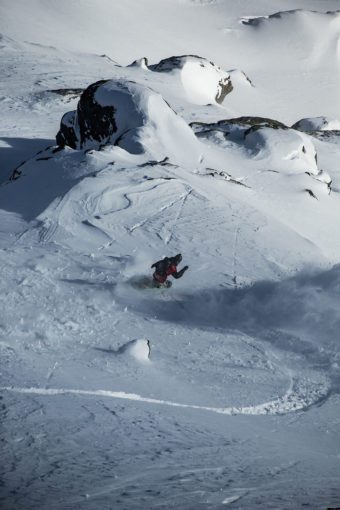
TO UNDERSTAND HOW HARD it is to make a living as a competitive freerider, consider the case of snowboarder Sammy Luebke. A 29-year-old father of two young children in Lake Tahoe, California, Luebke is the only person to win three straight FWT titles, the last coming in 2018. He has won 14 events in that span, including at least one in each of his six years on tour.
Luebke gets support from companies like Jones Snowboards and 686 Technical Apparel, which help cover his bills at home while he’s competing overseas, as well as a plane ticket here or there. “But nobody’s paying my way,” he says. To supplement his income, he washes windows five days a week during the summer. And he’s okay with that, to a degree. “The end game for most people on tour is they want to get picked up by sponsors and go film,” he says. “But for me, I’m done with filming. I enjoy the tour, I think it’s rad. If you love freeriding and travelling and pushing yourself, it’s something you want to get into.”
The FWT lost its title sponsor two years ago when Swatch decided not to renew a seven-figure deal. It has no presenting sponsor, either, though Audi remains a strong partner. One of the only endemic sponsors, Head Skis, decided not to re-up for 2019. Freeride organizers complain that the industry is happy to use the sport as a farm league, but won’t support it. So what gives?
No one likes to talk about this on the record, but brand marketers will tell you in casual conversation that it is hard to support the tour—and competitive freeriding events in general—when their athletes could miss the spotlight due to unpredictable results. “If you sign a two-year deal, you might not have any athletes on tour for the second year,” says an employee of a company that has sponsored the FWT in the past. Moles calls foul on that logic. “Freeskiing is what’s selling the sport, in ads and perception—that’s actually what is selling skis,” he says.
“It’s so hard to capture the level of skiing that’s actually going down. It either looks too easy if conditions are good, or the skiers don’t look great if conditions are hard.” – Ingrid Backstrom, former pro competitor
The FWT runs on a budget of US$6 million each winter, Hale-Woods says. It costs between $800,000 and $1.2 million to stage an FWT event, with $100,000 of that going to prize money. Each resort or destination is required to fund half the cost of the event, with the exception of Kicking Horse last year (Hale-Woods said the hosts paid about 20 per cent of the cost, a concession he made to give the tour a North American stop). In exchange, the tour sells its visibility: 37.8 million video views last season, 1.3 million live viewers, and 1,335 hours of television airtime in locations ranging from Russia to Brazil. Interestingly, no region showed the tour less than North America, where the FWT usually must buy airtime instead of simply supplying the footage, which is how it works elsewhere. To incentivize internet exposure, the tour rewards athletes who post the most on social media.
In an effort to broaden its appeal in the US and Canada, Hale-Woods and his partners have been shopping the tour to investors, hoping that additional funding will enable them to activate a growth strategy in regions where they are weaker. “A lot of top sports-marketing agencies and private-equity groups see us as interesting to very interesting, in terms of content production and community,” he says. “But often they think we’re too small to invest in, and that’s one of the major hurdles for us.”
If you ask Hale-Woods what he thinks the tour will look like in 10 years, he is genuinely optimistic. He granted Tanner Hall a season wildcard this year—a sign, he hopes, of increasing interest. “I believe there will be at least eight top events, three in North America, two in Asia, and three in Europe, with maybe even one in the Southern Hemisphere,” he says. “I believe we’ll have the top names taking part in it. And I believe we’ll be less dependent on pure, hard sponsorship due to monetized content.”
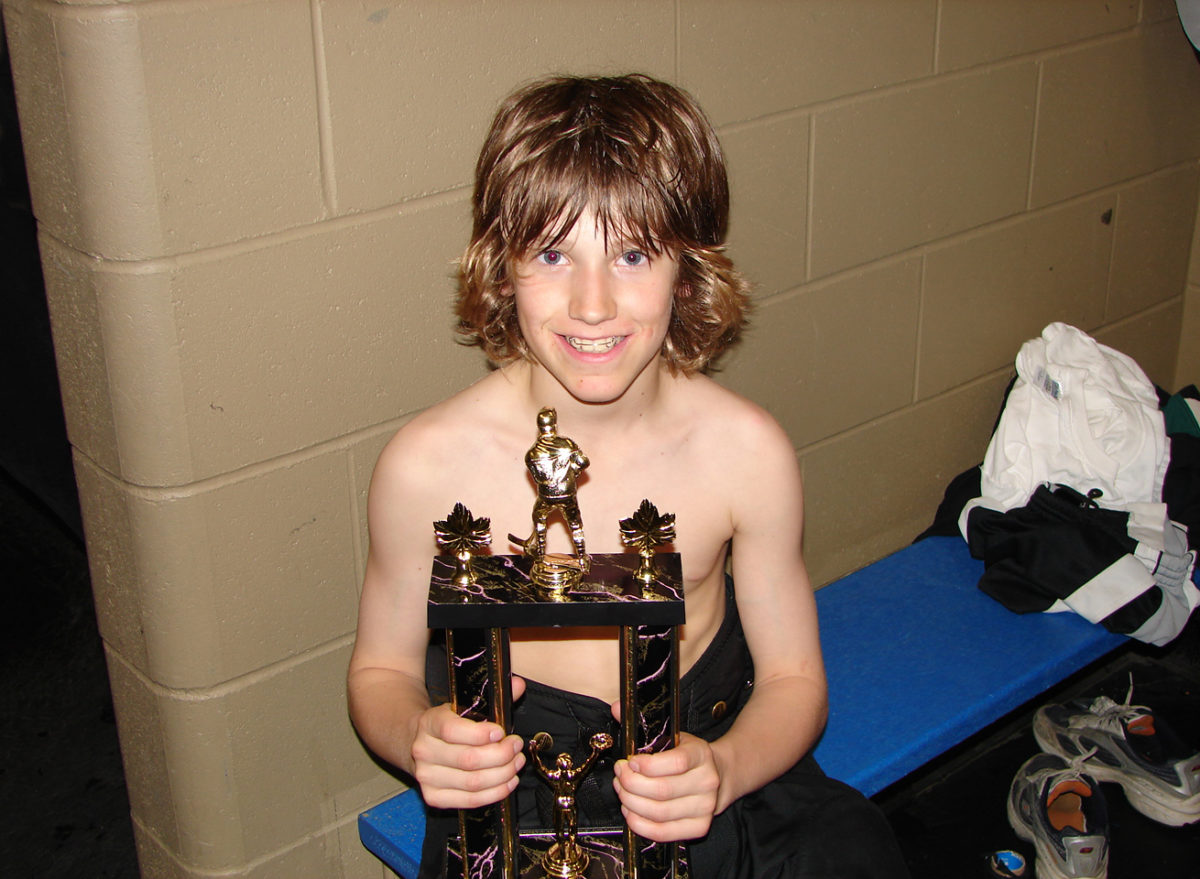
COOKE AND PEMBERTON-BASED PRODIGY Logan Pehota were the only Canadians on tour last year. Cooke had some good days and bad, highlighted by a fifth-place finish at Kicking Horse. He finished 18th overall. Pehota, who took second overall in 2016, requalified for next year’s tour in 10th place, despite an injury near the end of the season.
Meanwhile, the junior level keeps churning along. Five years ago, there were eight competitions in Canada. Holden said there could be 19 this winter, including three new venues. The Whitewater Freeride Team has placed an athlete on the podium at each of the past two Junior World Championships. Demand routinely outpaces the number of available entries at Canadian contests, which are capped at 200.
But some say the growth requires athletes and their families to fund it, and the sport is becoming too elite. Much of the IFSA’s $230,000 budget comes from membership fees and private donations. Parents can’t afford to take off work and travel every week just so their kids can score points and stay competitive. “The future of freeride is bleak,” Slater says. “I think it’s very bleak.” Holden adds, “If you need a certain amount of cash to be in the game, then as this thing continues to move forward you begin to price people out. I feel like the more mainstream it goes or tries to get pushed, the more watered-down the sport becomes. It’s a delicate balance between maintaining the roots of the sport, true to the athletes, versus packaging it to deliver to a more mainstream audience in search of sponsorship dollars.”
Cooke has no plans to try and qualify for the FWT again. “I don’t have anything else to prove with my skiing,” he says. “Despite the results, I was happy with how I skied last year.” Instead, he intends to start filming more, which is what his sponsors want.
No one likes to talk about this on the record, but brand marketers will tell you in casual conversation that it is hard to support the tour—and competitive freeriding events in general—when their athletes could miss the spotlight due to unpredictable results.
Last spring, he returned to his summer job with an elite BC Ministry firefighting team. He used to do it to help pay for the tour, which cost $30,000 to follow each year. He won’t need as much budget to film, so the gruelling schedule—he had just six days off from June to October in 2017—could actually yield some savings.
Despite Cooke’s mediocre results on the world tour, to those in the Kootenays he will always carry a special torch, unrelated to numbers. It is one that reflects the essence of freeride more than a trophy ever could. “To get there is almost harder than to stay there, I think,” Slater says. “Trace got there twice through sheer determination. He gave all he had, but where does it really get you at the end of the day? That’s the thing.”
Devon O’Neil is a correspondent for Outside magazine and a writer for Men’s Journal, Bike, and various ski publications. This is his first story for KMC. He lives in Breckenridge, Colorado.
Related Stories
2012 Freeskiing and Freeride World Tour
2012 Freeskiing and Freeride World Tour was in Revelstoke BC on Jan 4-11. Mens Results, -Canadian Kye Petersen took…
Golden Groms Get Front Row Seats to Freeride World Tour
The biggest event in freeride skiing descended upon Golden, British Columbia, recently and aspiring athletes seized the…
Why You Tour Contest
This has nothing to do with our magazine, other than the fact that we're big fans of CMH (Hans Gmoser is a Kootenay…
How One Newfoundland Man Changed Freeride Skiing Forever
THE YEAR WAS 1990. Backcountry skiing was, at least for the average recreational skier, the stuff of dreams. If you…
The Craziest Rope Swing in The World
Oh. My. God. This is absolutely terrifying. The look on their faces tells you just how terrifying it must have…


